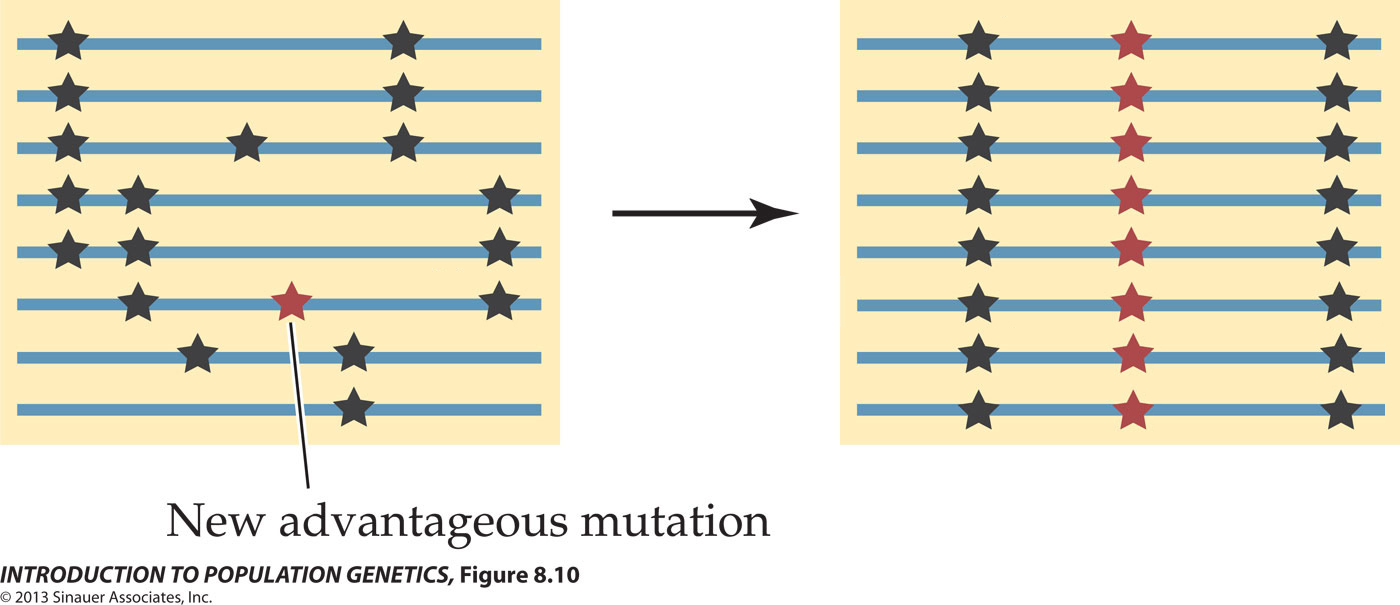
"Selective Sweep" of a novel advantageous mutation
The left-hand panel shows patterns of eight SNPs
in six distinct haplotypes among eight (haploid)
individuals. ##1 & 2, and ##4 &
5, are identical; #3 differs from ##1
& 2, and #8 from #7, by single
new SNPs.
A novel SNP (star) arises by a new mutation in a single individual, #6. The linked SNPs to the left & right are shared with the haplotype in ##4 & 5, which indicates common ancestry.
If the novel SNP confers an adaptive advantage, strong positive selection will take it to fixation in a few generations. Genetically linked SNPs on either side will also become fixed, even though they are selectively neutral, with no selective advantage in themselves. Natural Selection therefore "sweeps" all genetic variation out of the chromosome region. Such a sweep occurs only in the absence of genetic recombination, and is therefore expected to be limited to a relatively small region.
A novel SNP (star) arises by a new mutation in a single individual, #6. The linked SNPs to the left & right are shared with the haplotype in ##4 & 5, which indicates common ancestry.
If the novel SNP confers an adaptive advantage, strong positive selection will take it to fixation in a few generations. Genetically linked SNPs on either side will also become fixed, even though they are selectively neutral, with no selective advantage in themselves. Natural Selection therefore "sweeps" all genetic variation out of the chromosome region. Such a sweep occurs only in the absence of genetic recombination, and is therefore expected to be limited to a relatively small region.
Such neutral
markers can be used to detect genetically-linked
disease SNPs.
Figures © 2013 by Sinauer; Text material © 2025 by Steven M. Carr